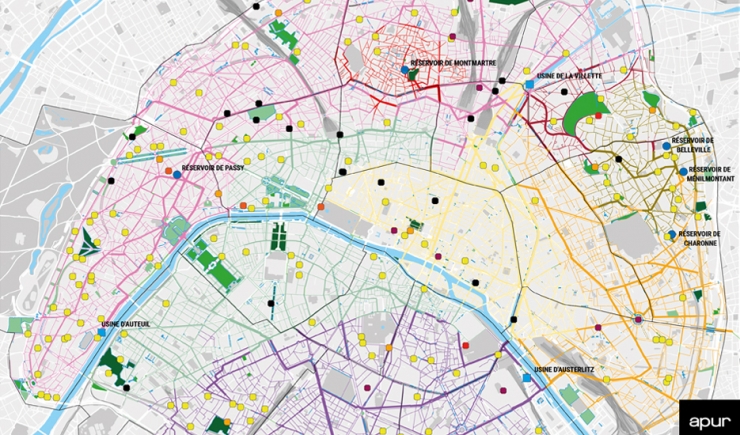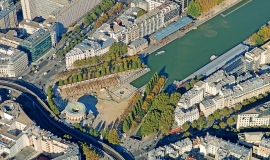
The City of Paris is equipped with a non-drinking water network of nearly 1,700 km. A legacy from the 19th century, this network is mainly supplied by water from the Ourcq canal, supplemented by water taken from the Marne and Seine rivers. Three factories distribute the water to six reservoirs and one water tower. A daily average of more than 214,000 m3 were produced in 2019.
This raw water supplies the the cisterns (RC) for sewer drainage to ensure the efficient functioning of the system, water supply pipes (BL), for filling water bowsers (BRT) and watering systems (BA) for cleaning streets and watering vegetation, as well as “blue” infrastructures in parks, gardens and woods (pools, ponds, lakes, streams and rivers and even ornamental fountains).
The Paris City Council decided in 2012 to maintain and optimise this water network and approved the 2015 Eau de Paris Master Plan. A new master plan for the uses and network is to be drawn up for the 2022-2034 period. While aiming to rationalise this legacy, the aim is to preserve the historical uses and to render non-drinking water an important element in reinforcing greening and the fight against urban heat islands in a city which is economical with its water and energy resources.

